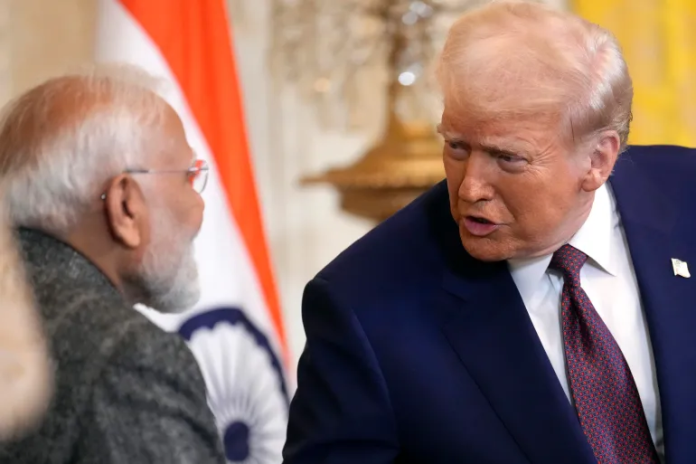In a dramatic escalation of his global trade offensive, US President Donald Trump imposed punishing new tariffs on India this week, triggering a fierce backlash from New Delhi and threatening to unravel one of Washington’s most strategically vital partnerships.
The move marks a perilous new chapter in Trump’s “economic nationalism” doctrine, even though he deflected questions about potential tariff actions against China.
On Wednesday, 6 August, Trump signed an executive order slapping a 25% additional tariff on Indian goods, effective in 21 days. This stacks atop a separate 25% tariff taking effect on 7 August, creating an unprecedented 50% total levy for many products from the world’s fifth-largest economy.
The White House decree explicitly targets India’s continued import of Russian oil.
“I find that the Government of India is currently directly or indirectly importing Russian Federation oil,” Trump declared in the order, asserting this trade “poses an unusual and extraordinary threat to the national security and foreign policy of the United States.”
The president announced this a few days earlier, accusing India on social media of profiteering:
“India is not only buying massive amounts of Russian Oil, they are then, for much of the Oil purchased, selling it on the Open Market for big profits,” he said.
The Trump administration left open applying similar “secondary sanctions” against other Russian oil buyers like China and Turkey.
India’s response
India’s Ministry of External Affairs swiftly condemned the tariffs as “unfair, unjustified and unreasonable” in a scathing statement.
“Like any major economy, India will take all necessary measures to safeguard its national interests and economic security … However, it is revealing that the very nations criticising India are themselves indulging in trade with Russia,” Randhir Jaiswal, Ministry of External Affairs spokesperson, stated.
Officials stressed that 1.4 billion Indians rely on discounted Russian crude after traditional suppliers diverted oil to Europe following the outbreak of war in Ukraine.
Several rounds of trade talks, including a high-profile April visit by Vice President JD Vance, failed to bridge differences. India had offered concessions like cutting car taxes and boosting US defence purchases but refused to open its dairy and farm sectors, citing millions of vulnerable workers.
Critics argue that Trump’s actions could force India to reconsider its strategic position, deepening ties with Russia, China and other countries. India’s Prime Minister Narendra Modi plans to attend the Shanghai Cooperation Organisation summit in late August.
Meanwhile, National Security Adviser Ajit Doval visited Russia. Although his visit had been planned in advance, it gained particular significance against the backdrop of tariff threats.
Amid the India furore, Trump remained evasive when pressed on extending similar tariffs to China, Russia’s top oil customer. The US president said on Wednesday that he could announce tariffs on China similar to the 25% duties against India.
“It may happen … I can’t tell you yet. We did it with India. We’re doing it probably with a couple of others. One of them could be China,” Trump said.
